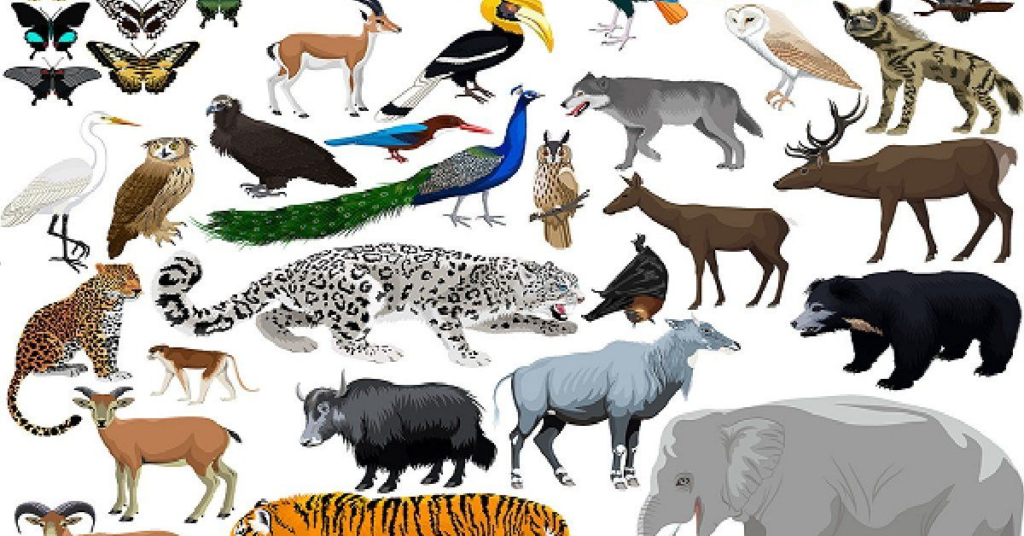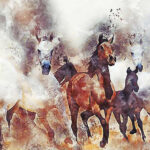Wildlife Conservation: Protecting Nature for Future Generations
Introduction: Why Wildlife Conservation Matters
Many of us care about wildlife conservation. It often takes a backseat in our daily lives. Majestic tigers live in Asia. The Pacific Ocean contains intricate coral reefs. Our planet is home to an incredible array of wildlife. Each species is crucial for our ecosystems. Humans threaten many species with extinction by disrupting ecosystems and destroying habitats. Deforestation and poaching threaten Sumatran rhinos and Amur leopards. Humans pollute. They overfish. And, they cause climate change. All these activities alter the planet’s biodiversity. This blog explores the importance of wildlife conservation. It looks at the threats facing wildlife and the benefits of preserving them. It explores the steps we’ve taken to protect our natural heritage.
The threats facing wildlife.
Habitat Destruction
Habitat destruction threatens wildlife. Humans are ruining habitats. They are ruining forests and grasslands. This harms the environment and wipes out species’ homes. Amazon rainforest destruction threatens jaguars and eagles. This destruction disrupts ecosystems, severs food chains, and accelerates climate change. Florida panthers are extinct. They struggle to find food, shelter, and mates, causing their numbers to drop. Conservation efforts are racing against time to save them. One million species face extinction human actions. By understanding this, we’ve worked to preserve habitats and protect ecosystems. This leads to population decline and even extinction. The destruction of the Amazon rainforest has pushed jaguars to the brink. It has forced them to go closer to humans for food, causing conflict. Orangutans in Borneo and Sumatra declined by 80%. Deforestation caused this in 75 years. Trees fight climate change and produce oxygen. Cutting them down harms the planet.
Climate Change
Climate change threatens wildlife. Rising temperatures, changing rain patterns, and more extreme weather are disrupting ecosystems. They upset the delicate balance within them. Polar bears lose their ice habitat as global warming melts it. This loss affects their ability to hunt and survive. Coral reefs support lots of marine life. They’re having bleaching events in the oceans. This leads to coral death and reef collapse.
Pollution
Pollution in its various forms—air, water, and soil—poses a severe threat to wildlife. Chemical pollutants, like pesticides and industrial waste, can poison animals. Marine creatures in the oceans become entangled in and eat plastic pollution. This harms or kills them. Oil spills are environmental disasters that harm our planet. The Exxon Valdez spill was in 1989. It released 11 million gallons of oil into Alaska’s Prince William Sound. It’s killed thousands of seabirds, sea otters, and seals. Oil spills destroy habitats. This oil impairs their ability to swim and stay warm.
Overexploitation
People have overexploited wildlife by hunting, fishing, and poaching. This has led to the decline of many species. The illegal wildlife trade is a lucrative business. It’s driving species like elephants and rhinos toward extinction. Overfishing has depleted fish populations. It’s disrupted marine food webs and threatens communities that rely on fishing.
Invasive Species
Invasive species introduced by human activities can wreak havoc on local ecosystems. These non-native species often outcompete, prey on, or bring diseases to native wildlife. This leads to declines or extinctions. someone introduced the brown tree snake to Guam. This has led to the decline of several bird species on the island.
The benefits of wildlife conservation.

Biodiversity and Ecosystem Health
Biodiversity, the variety of life on Earth, is essential for ecosystem health. Each species, no matter how small, plays a role in maintaining the balance of nature. Predators control prey numbers, pollinators aid plant reproduction, and decomposers recycle nutrients. Healthy ecosystems provide many services. These include clean air, clean water, fertile soil, and climate regulation.
Economic Benefits
Wildlife and natural habitats offer significant economic benefits. Ecotourism relies on untouched nature and lots of wildlife. It’s making a lot of money for many countries. Africa has safaris. Birdwatching is in the Americas. Diving is in coral reefs. They’re a few examples of activities that draw tourists and create jobs. Many plants and animals are medicinal. Saving them can lead to new drugs and treatments.
Cultural and recreational values.
Wildlife and nature hold great value for people worldwide. They’re important for culture and recreation. Many cultures have deep connections with animals and plants. They see them as symbols, totems, or spiritual beings. Nature provides fun things like hiking, camping, and wildlife photography. These things help our physical and mental health.
Ethical Responsibility
There is an ethical dimension to wildlife conservation. Many believe that all species have an intrinsic value and a right to exist. Humans are the dominant species on the planet. We’ve got a duty to protect the other forms of life we share our world with.
Steps to Conserve Wildlife
Protected Areas and Wildlife Reserves
Creating protected areas and wildlife reserves is one of the best ways to save wildlife. These areas are safe havens. Animals and plants can live and reproduce there without the pressures of humans. National parks, marine protected areas, and nature reserves are examples of such initiatives. These areas protect wildlife. They offer chances for research, education, and ecotourism.
Legislation and Enforcement
Strong laws and regulations are crucial for wildlife conservation. Laws protect threatened species and regulate the wildlife trade. The Endangered Species Act has helped the bald eagle and the gray wolf recover. These laws ensure that humans don’t drive species to extinction. They do this through unchecked hunting, poaching, and habitat destruction. It has over 180 member countries. It regulates the global trade of wildlife products. This stops the exploitation of species like elephants, rhinos, and pangolins. These laws address why species decline. Habitat loss and climate change are major threats. Rising temperatures and altered weather patterns disrupt ecosystems, putting them at risk. They promote conservation and fight wildlife trafficking globally. Enforcing these laws well is key. It deters illegal activities like poaching and habitat destruction.
Community Involvement and Education
Engaging local communities in conservation efforts is vital. Communities understand the value of wildlife. They take part in conservation efforts. They become stewards of their natural resources. Education programs can raise awareness about conservation’s importance. They can teach sustainable practices. Locals protect wildlife in community-based projects.
Sustainable Practices
Sustainable agriculture plays a vital role in preserving biodiversity by minimizing habitat destruction. This approach avoids the clearance of natural habitats, allowing ecosystems to thrive. Instance, organic farming in Africa’s savannas has protected endangered species. It has helped the elephant and lion. Sustainable agriculture cuts pesticide use, protecting soil, water, wildlife, and human health.
Sustainable forestry ensures that forests remain healthy and productive for future generations. It involves responsible wood harvesting, reforestation, and the protection of old-growth forests. Careful forest management preserves habitats for many species. It helps regulate the climate by taking in carbon dioxide. A notable example is sustainable forestry in Scandinavian countries. They have maintained their forests’ ecological health. By using these sustainable practices, we can protect the environment. We can ensure a healthy planet for years to come.
Sustainable fishing practices help maintain fish populations and marine ecosystems. Supporting products is key. Groups like the Rainforest Alliance must certify them. The groups, including the Marine Stewardship Council, are key. This support can make a difference.
Addressing Climate Change
Mitigating climate change is critical for the long-term survival of wildlife. Reducing greenhouse gases means using renewable energy more. It means planting trees. This helps to stabilize the climate. Protecting and restoring forests, wetlands, and mangroves helps. It makes ecosystems better able to handle climate impacts. Individual actions help. Using less energy and supporting clean energy initiatives help. They contribute to the larger effort.
Research and Monitoring
Research and monitoring are essential components of wildlife conservation. Studies help us understand the needs and behaviors of species. They show the health of ecosystems and the impacts of human activities. Conservationists track changes and threats by monitoring populations and habitats. It’s citizen science programs, where volunteers help collect data, can enhance research efforts.
Success Stories in Wildlife Conservation

The Bald Eagle.
The recovery of the bald eagle in the United States is a notable success story. Bald eagles are an American symbol. By the mid-20th century, their numbers dropped from 300,000 to 417 breeding pairs. Humans destroying habitats and using DDT contaminated their food and weakened their eggs. Biologist Rachel Carson warned about DDT’s dangers in her book “Silent Spring.” This led to a ban in 1972. Conservation efforts worked. They let the bald eagle leave the endangered species list in 2007.The population has rebounded. Legal protection, habitat restoration, and the banning of DDT are to thank. Today, the bald eagle is no longer listed as endangered. It’s a symbol of successful conservation.
The giant panda.
The giant panda, native to China, has made a remarkable recovery. Conservation efforts have increased the panda population. The IUCN downgraded the giant panda from “endangered” to “it’s” in 2016. This highlights the positive impact of these efforts.
Marine Protected Areas are in Palau.
Palau is a small island nation in the Pacific. It has established one of the world’s largest marine protected areas. The area covers 80% of its territorial waters. This bold move protects marine biodiversity, supports fish populations, and promotes sustainable tourism. The Palau National Marine Sanctuary is a model for marine conservation. It shows the benefits of protecting ocean ecosystems.
The Arabian Oryx.
It was extinct in the wild. Yet, scientists have reintroduced it into its natural habitat. Breeding programs and global cooperation led to reintroducing the oryx. They did it in several countries in the Arabian Peninsula. Today, the Arabian oryx is “vulnerable.” This is a big improvement from its old status.
How You Can Help
Support conservation organizations.
Many groups dedicate themselves to wildlife conservation. They work on the front lines to protect species and habitats. Supporting these organizations through donations, memberships, or volunteering can make a significant impact. Well-known organizations include the World Wildlife Fund, The Nature Conservancy, and Conservation International.
Make sustainable choices.
Individual actions can make a big difference. Choose sustainable products, reduce waste, and cut your carbon footprint. Simple changes help. using less plastic, saving water, and using less energy. These changes help make a healthier planet.
Advocate for policy change.
Advocacy is a powerful tool for conservation. Supporting policies and laws that protect wildlife and habitats can help. contacted your representatives and joined in on conservation campaigns. These actions can bring about positive change. Raising awareness through social media and community events helps spread the message.
Take part in Citizen Science.
Citizen science projects invite the public to contribute to scientific research. You help conservation efforts. You do this by joining projects like bird counts and wildlife surveys. Platforms like it’s iNaturalist and eBird are great places to start.
Educate Others
Education is key to fostering a conservation ethic. Teach and talk about wildlife in school, programs, or chats. This sparks care and protection. It sustains conservation efforts.
Conclusion: It’s a call to action
Wildlife conservation is crucial. It needs everyone’s effort: individuals, communities, governments, and organizations. We must first understand the threats to wildlife. we should appreciate biodiversity’s benefits. This way, we can ensure future generations inherit a vibrant world. Wildlife survival depends on our actions now. We function in conservatiprioritizen our lives. Let’s work together to protect Earth’s amazing life diversity. We’ll create a sustainable future for all.











